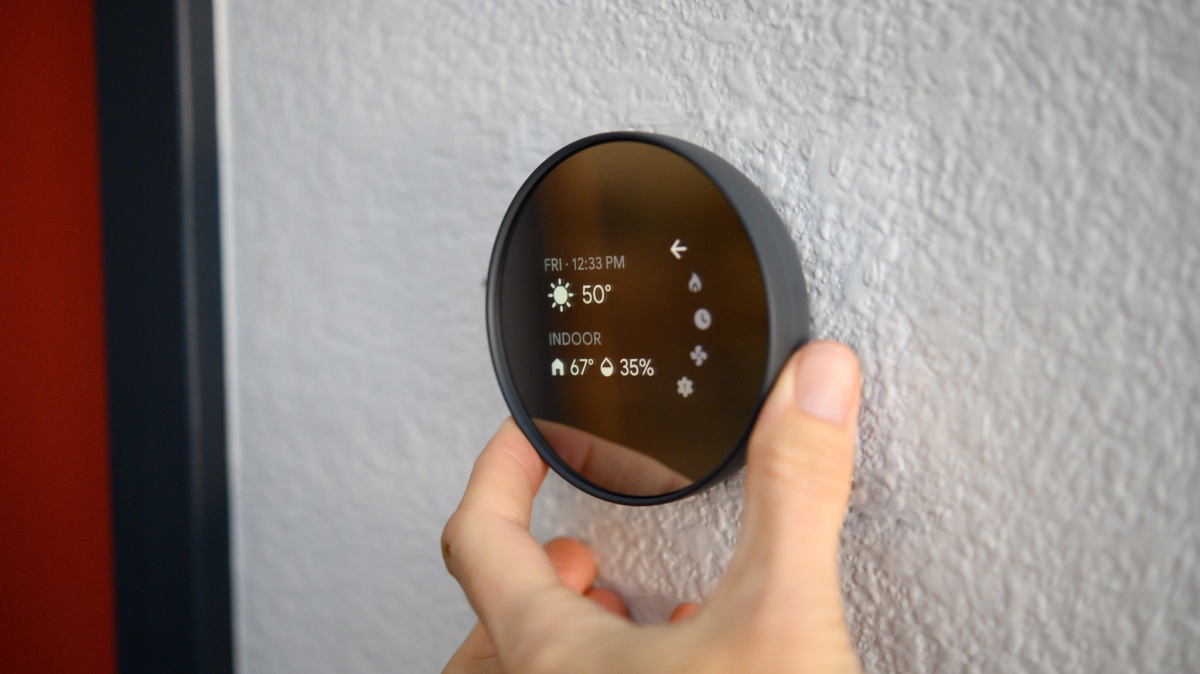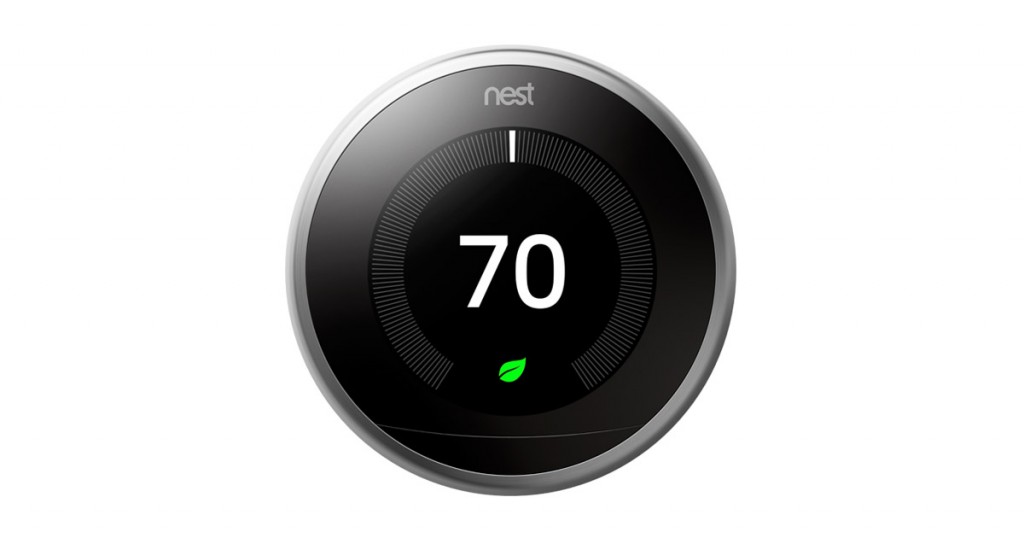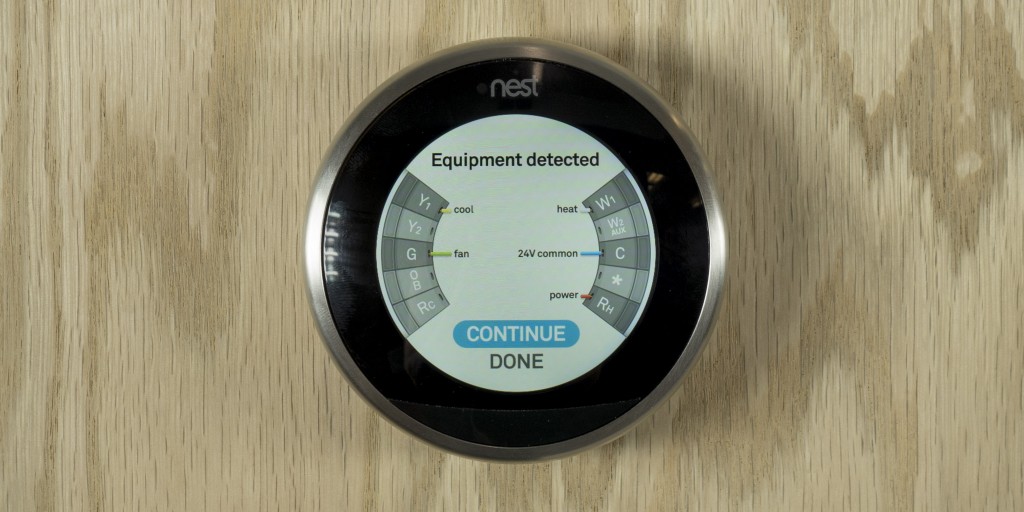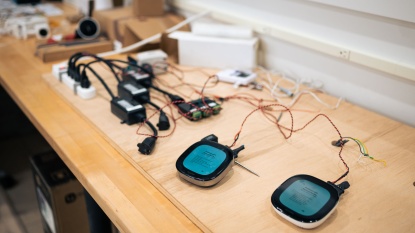Nest offers several new colors for the Learning Thermostat in addition to the previous four options. Nest describes these as Mirror Black, Brass, and Polished Silver — essentially black, silver, and gold — so you now have even more ways to match the look of the Nest to the existing aesthetic of your home.
Our Verdict
Nest offers several new colors for the Learning Thermostat in addition to the previous four options. Nest describes these as Mirror Black, Brass, and Polished Silver — essentially black, silver, and gold — so you now have even more ways to match the look of the Nest to the existing aesthetic of your home.
Compare to Similar Products
 This Product
Nest Learning Thermostat | |||||
|---|---|---|---|---|---|
| Awards | |||||
| Price | $249 List $182.58 at Amazon | $180 List $107.65 at Amazon | $55 List $43.99 at Amazon | $80 List $63.99 at Amazon | Check Price at Amazon |
Overall Score  |
|||||
| Star Rating | |||||
| Bottom Line | One of the best, may not be appropriate for all homes | An easy-to-use, highly-programmable smart thermostat that has a large screen and tons of useful features | An inexpensive, reliable, accurate, and programmable digital thermostat that lacks WiFi and remote access | This smart thermostat is competitively priced while offering high-end scheduling and programming features — it fits right in with Alexa, too | This thermostat offers simplicity and economy in exchange for higher-level programming |
| Rating Categories | Nest Learning Therm... | Honeywell WiFi Smar... | Orbit Clear Comfort | Amazon Smart Thermo... | Emerson NP110 |
| Ease of Use (40%) | |||||
| Install & Support (30%) | |||||
| Remote Access (20%) | |||||
| Accuracy (10%) | |||||
| Specs | Nest Learning Therm... | Honeywell WiFi Smar... | Orbit Clear Comfort | Amazon Smart Thermo... | Emerson NP110 |
| Colors | Stainless Steel, Copper, White, Black, Mirror Black, Brass, Polished Steel | Grey, white | White | White | White |
| Battery Backup | Built-in, rechargeable lithium-ion battery | No | Yes | No | Yes |
| Learning/ Adaptive Controls | Yes - "Nest Sense" | Yes | No | Yes | No |
| Dimensions | Diameter: 3.3 in Depth: 1.21 in |
Length: 3.5 in Width: 4.5 in Depth: .88 in |
Length: 5.3 in Width: 3.25 in Depth: 1.3 in |
Length: 3.5 in Width: 3.5 in Depth: .84 in |
Length: 6 in Width: 4 in Depth: 1.5 in |
| Works Directly with Alexa/Amazon Echo | Yes | Yes/Hey Google | No | Yes | No |
| Works with Apple HomeKit | No | No | No | No | No |
| Model # | T3007ES | RTH9585WF1004/U | 83521 | S6ED3R | NP110 |
Our Analysis and Test Results
This Nest excelled throughout our testing, earning high marks across the board. There was a significant gap between this product and its competitors. While this may be much more expensive than you are typically used to paying for a thermostat, it is well worth it if you are looking for the latest and greatest. While this model is marketed as a learning thermostat — one that will keep track of your various comings and goings to maximize energy savings — we did not take this into account in our testing, and it still was a top performer.
Performance Comparison
Ease of Use
This category made up the largest component of our overall score, and for good reason. None of these products will save you any money, be more energy-efficient, or environmentally friendly if they are too difficult to figure out how to actually use. We rated each model on the initial setup after powering on the thermostat, setting a schedule and the correct time and date, using more advanced settings, holding and adjusting the current temperature and the clarity with which information was conveyed. The actual installation was a separate metric, which you can read more about below. The Nest scored a 7 out of 10 for ease of use — a tie for the top score in this metric.
The Nest has a fantastic series of guided prompts to lead you through the setup process on the device, as well as an installation video on their website. The initial setup consists of selecting a language, connecting to WiFi, selecting your HVAC system type, location, and setting heating and cooling preferences. One aspect of the Nest that we found extremely useful was the wiring error detection. This would show you what wires the Nest believed had been hooked up, and what it thought they ran too, extremely useful for troubleshooting if a wire was in the wrong location or had a faulty connection.
When it came to setting the schedule, this product performed better than average, but the scroll wheel and single button interface proved to be solidly irritating. Thi is the price that must be paid for keeping such a sleek and simplistic aesthetic. The schedule only allows you to set parameters for equipment that is currently installed in your home, and allows the temperature to be set in as small as 15 minute increments.
The time and date are easily set manually, or automatically as soon as the device connects to a WiFi network.
Advanced settings were easy enough to locate and modify, and labeled clearly, but we found it was substantially easier to change these settings through the remote connection and smartphone app.
This was by far the easiest model to adjust the current temperature, simply rotating the outer ring will modify the desired setpoint. In practice, this almost proved too sensitive, and we found that we would accidentally modify the temperature when clicking the faceplate to access the main menu. When set to hold a specific temperature, the Nest will maintain it until the next scheduled change, then revert to the programmed temperatures in the schedule.
The display is extremely clear, usually defaulting to displaying the set temperature in a large font, with the current temperature and time to reach the desired in smaller font around the outside of the screen.
Usually, the device will turn the display off, only turning it on when the occupancy sensor detects someone approaching it. The Nest also allows you to set a maintenance reminder for the filters on the ventilation system, having you enter the date they were installed and then notifying you when it is time to replace them.
Install & Support
This was the second most important category that we looked at, making up 35% of the final score. While the install will only happen once, it can still be a critical aspect when determining which product to buy. The ability to perform a DIY install is crucial, as it can cost anywhere from $100-300 for a professional to install them, instantly negating any savings you may get with these products for a long time. We installed each thermostat on our testing board, as well as in our office.
When actually installing the Nest base plate, we were a huge fan of the built in level, as well as the included screwdriver. While many people may have the necessary tools already, forgoing a trip to go scrounge in the toolbox was extremely convenient. The simple and easy-to-follow written instructions, along with the aforementioned installation video and wiring check made installation a breeze. You would then select a WiFi network and enter the password to receive a verification code to pair it with your account on the mobile application.
In this situation for the install, we knew exactly what type of heating system was present, and exactly what wires connected to which components. This may not be the case for many of you, so we were curious how helpful the manufacturer would be. We sent an email stating that we had recently moved into a new place, and the previous tenants had taken the thermostat, leaving bare wires hanging out of the wall, including a photo of the wires.
We asked for help determining which wire was which, and if it was compatible with the Nest. Unfortunately, they could offer us no help, and recommended us to a Nest Pro to help install. While the response was prompt and would lead to a solution, other manufacturers walked us through opening the panel on our HVAC system to see the other end of the wires, and aided us in installing it. This might be something to consider if you aren't the most familiar with your HVAC system, as you may just be referred to a Nest Pro if you run into problems.
The application was easy to install on a mobile device, and pairing the thermostat just required entering the code from the thermostat.
Remote Access
This metric looked at the ease of changing setting, setting a schedule, and adjusting the temperature, but doing all of this remotely through the web interface. For the Nest, we found it substantially easier to use the app to adjust settings than the base. It is also possible to create a 4 digit code to lock the device, something that is great for households with children, preventing them from accidentally changing the temperature by playing with the thermostat — something we easily could see happening by spinning the outer ring.
This was by far the easiest out of all the products we tested to adjust the settings remotely. Turning on the away mode on the app will put the thermostat into an energy savings mode, keeping the temperature in a preset mode. In direct contrast to the ease of changing settings, we found that adjusting and setting the schedule was quite annoying, with a non-intuitive interface that was worse than on the base.
To adjust the current temperature, you can either drag and drop to the desired temperature, or use the up/down arrows.
Accuracy
We found this to be the most accurate thermometer in our tests, using a lab grade thermometer as a reference. We found it usually read the same temperature as the baseline thermometer, or was off within .5 degrees Fahrenheit, most likely due to rounding on the behalf of the thermostat.
Value
This model isn't necessarily a great value, as it was one the most expensive model that we tested, but was also one of the highest performing models.
Conclusion
Essentially, this product is a perfect example of you get what you pay for. This device performed the best in our tests and really is the product you select if you want the best and are willing to pay for it.
















